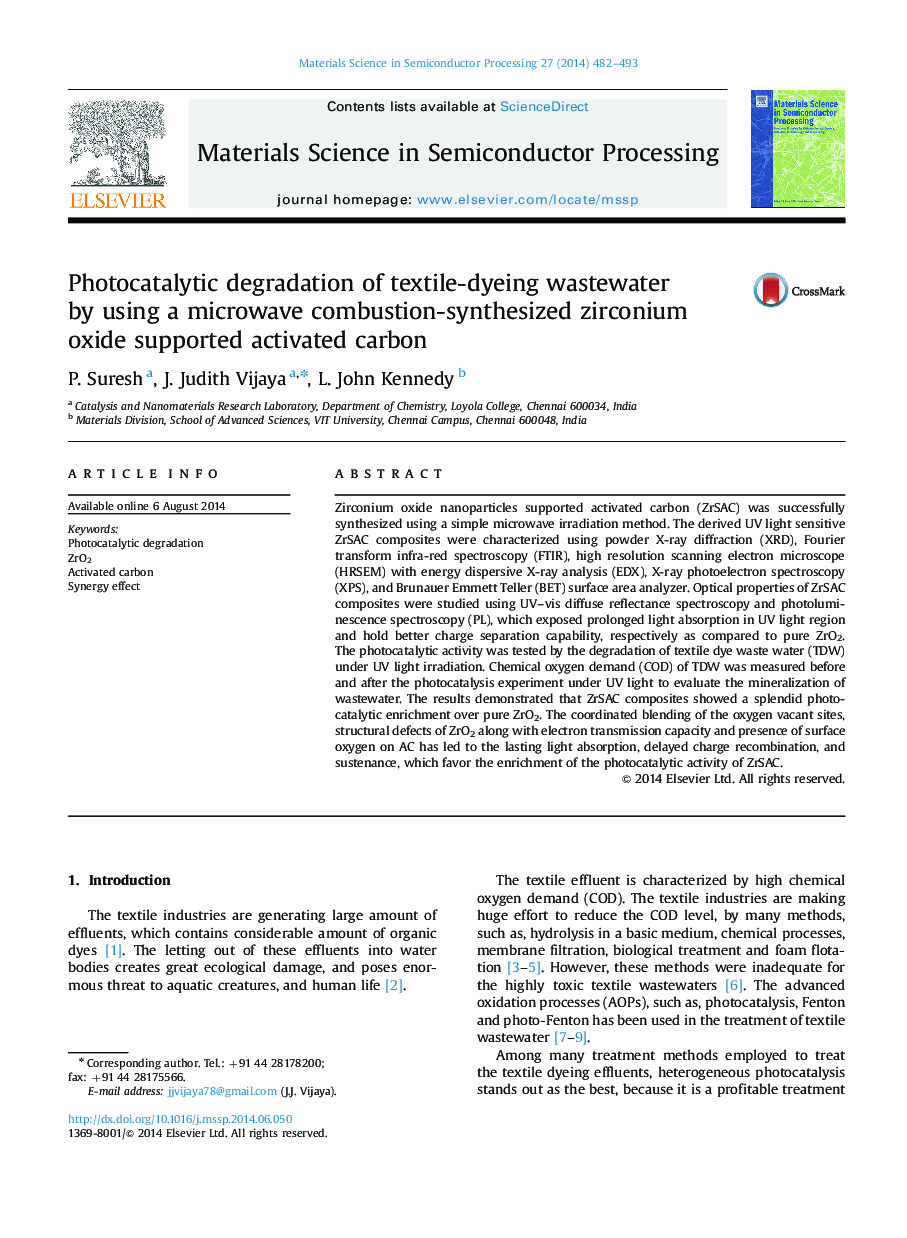| کد مقاله | کد نشریه | سال انتشار | مقاله انگلیسی | نسخه تمام متن |
|---|---|---|---|---|
| 728451 | 1461419 | 2014 | 12 صفحه PDF | دانلود رایگان |
Zirconium oxide nanoparticles supported activated carbon (ZrSAC) was successfully synthesized using a simple microwave irradiation method. The derived UV light sensitive ZrSAC composites were characterized using powder X-ray diffraction (XRD), Fourier transform infra-red spectroscopy (FTIR), high resolution scanning electron microscope (HRSEM) with energy dispersive X-ray analysis (EDX), X-ray photoelectron spectroscopy (XPS), and Brunauer Emmett Teller (BET) surface area analyzer. Optical properties of ZrSAC composites were studied using UV–vis diffuse reflectance spectroscopy and photoluminescence spectroscopy (PL), which exposed prolonged light absorption in UV light region and hold better charge separation capability, respectively as compared to pure ZrO2. The photocatalytic activity was tested by the degradation of textile dye waste water (TDW) under UV light irradiation. Chemical oxygen demand (COD) of TDW was measured before and after the photocatalysis experiment under UV light to evaluate the mineralization of wastewater. The results demonstrated that ZrSAC composites showed a splendid photocatalytic enrichment over pure ZrO2. The coordinated blending of the oxygen vacant sites, structural defects of ZrO2 along with electron transmission capacity and presence of surface oxygen on AC has led to the lasting light absorption, delayed charge recombination, and sustenance, which favor the enrichment of the photocatalytic activity of ZrSAC.
Journal: Materials Science in Semiconductor Processing - Volume 27, November 2014, Pages 482–493
